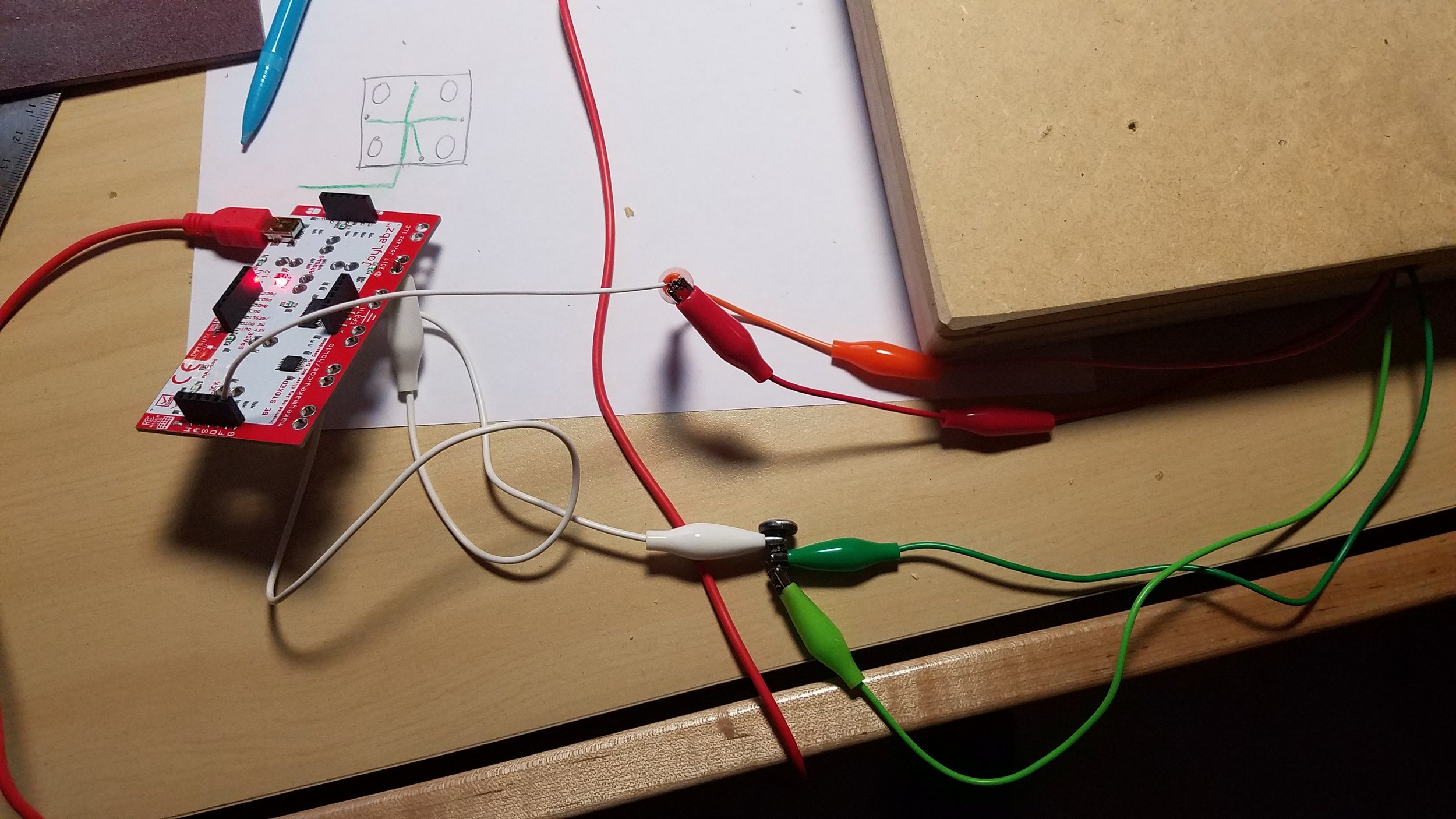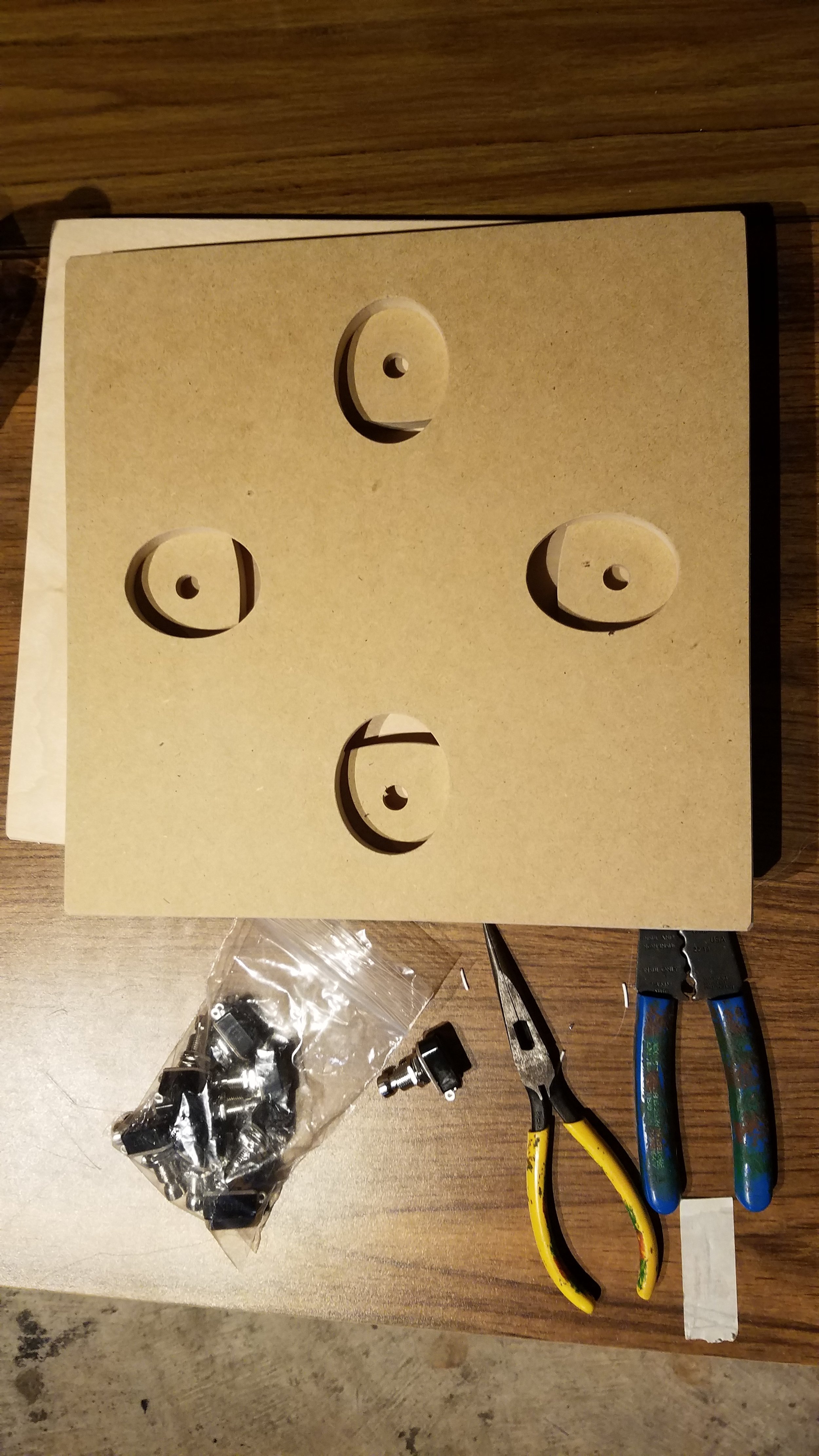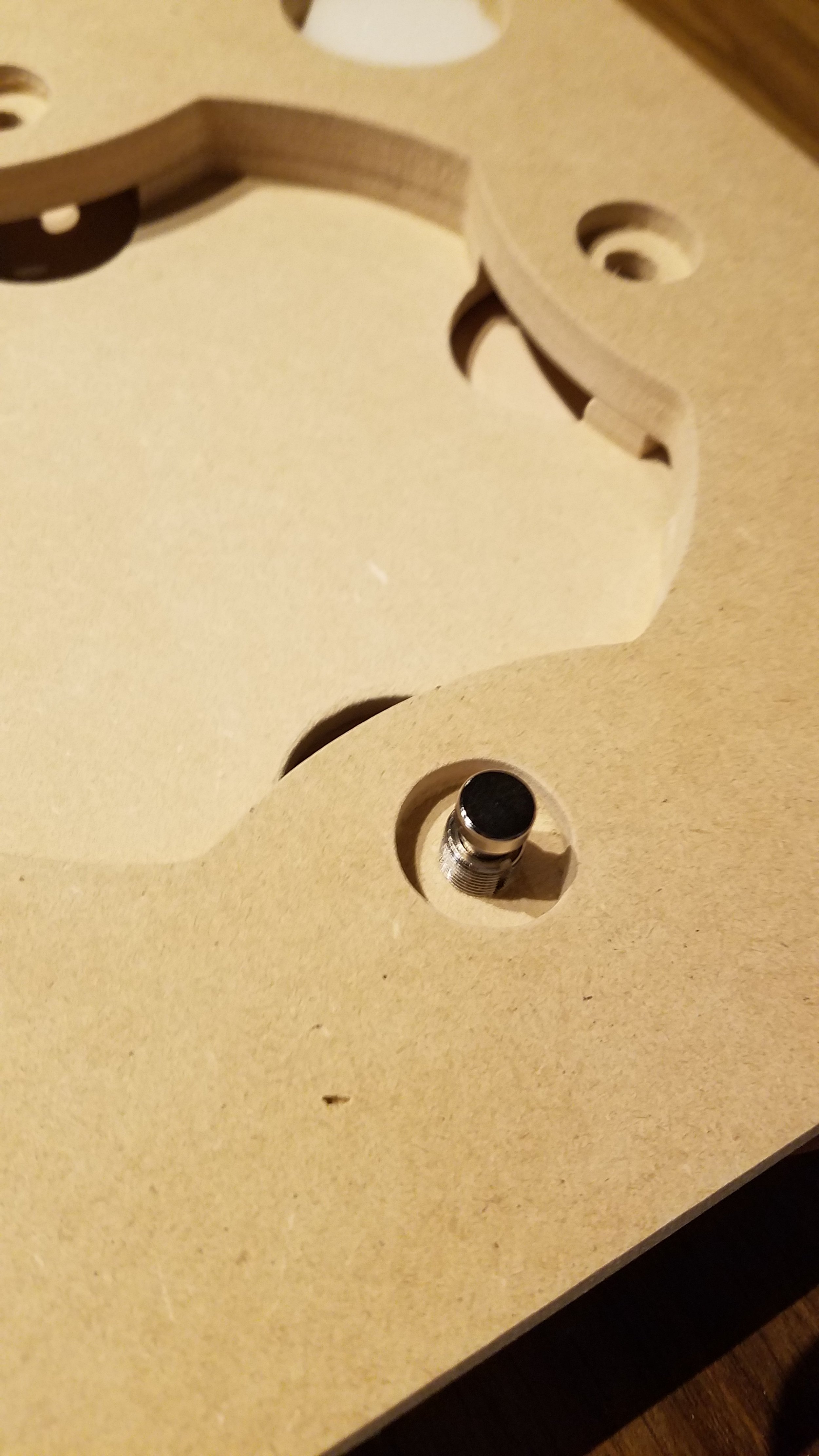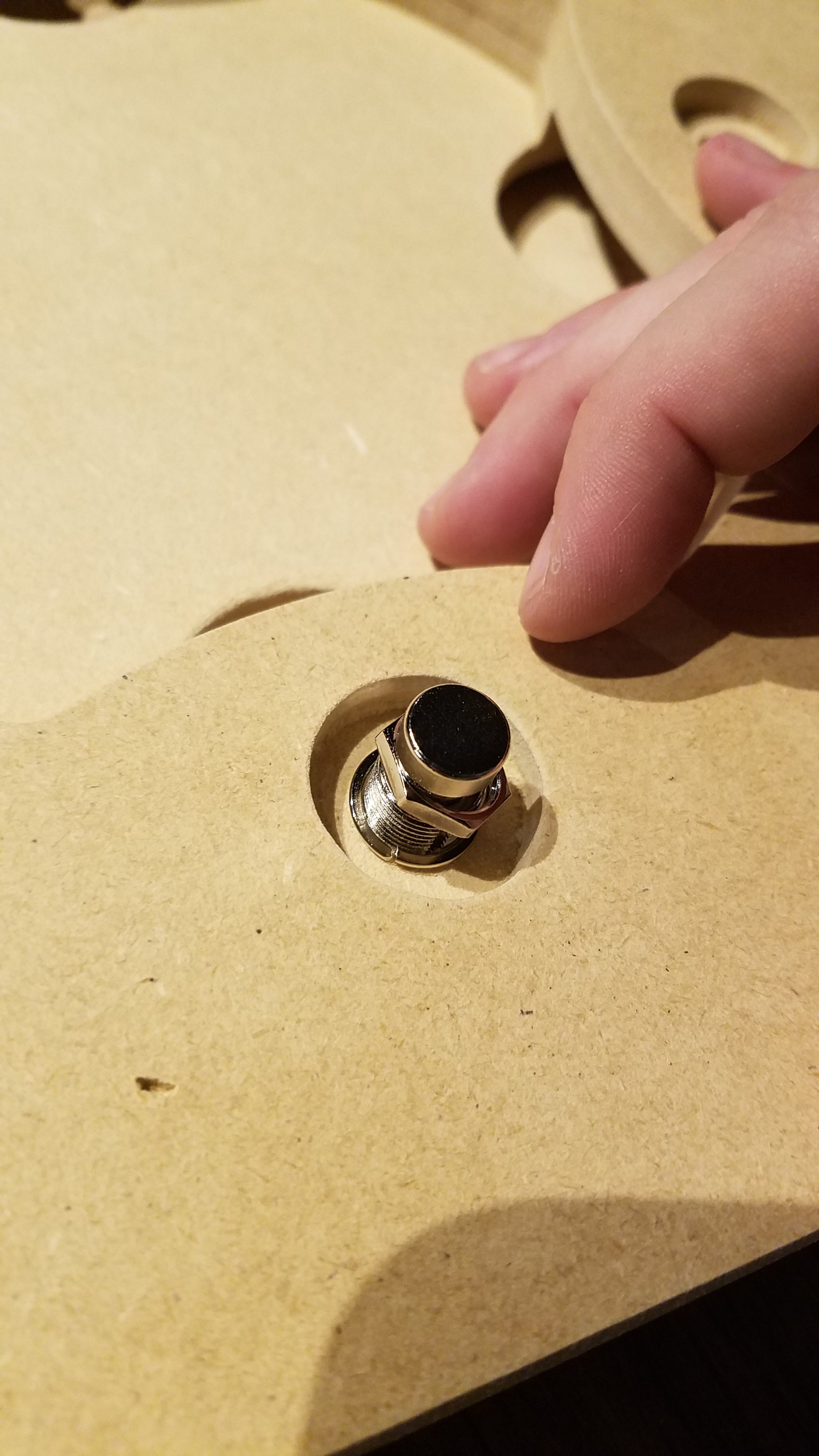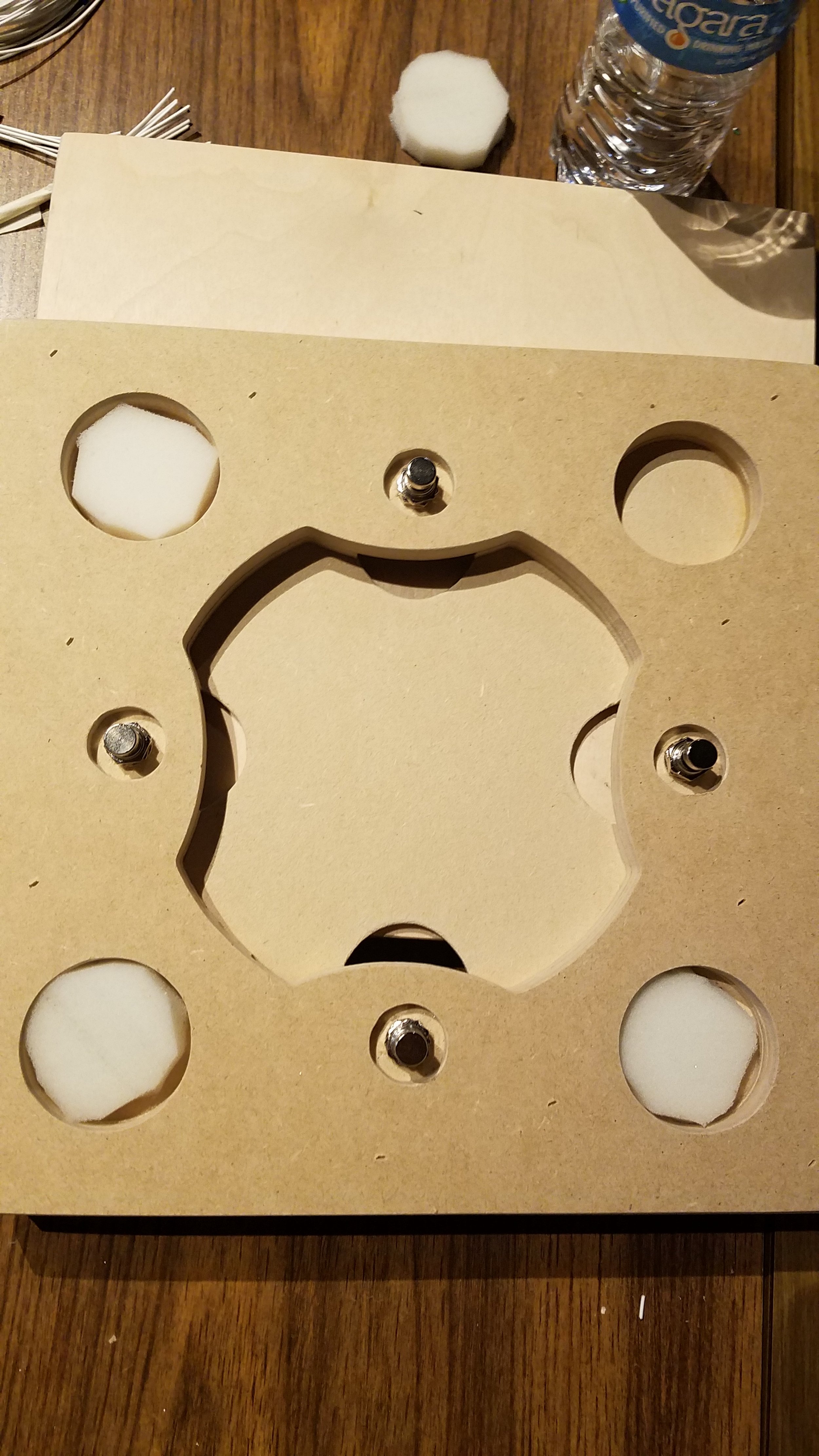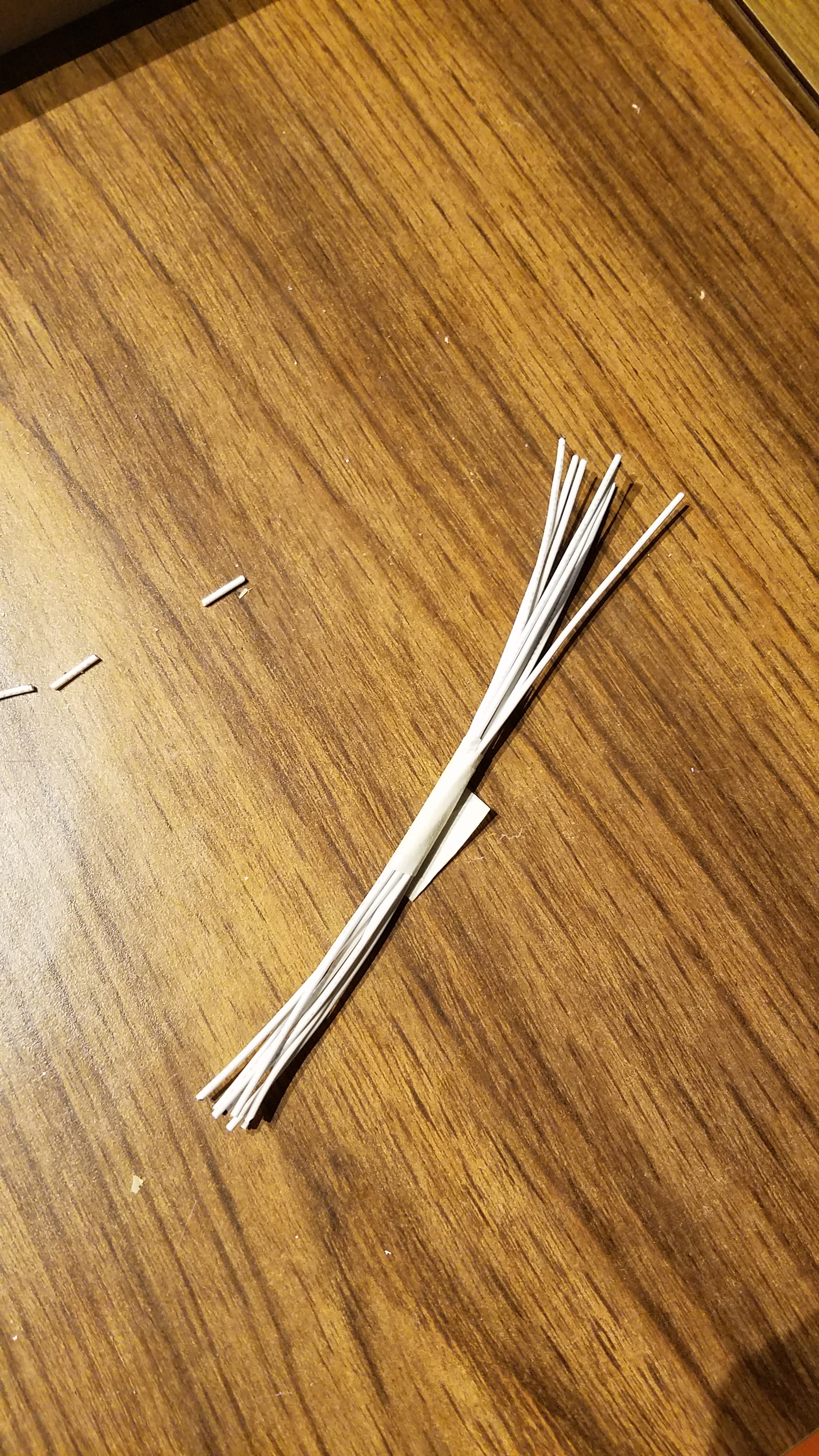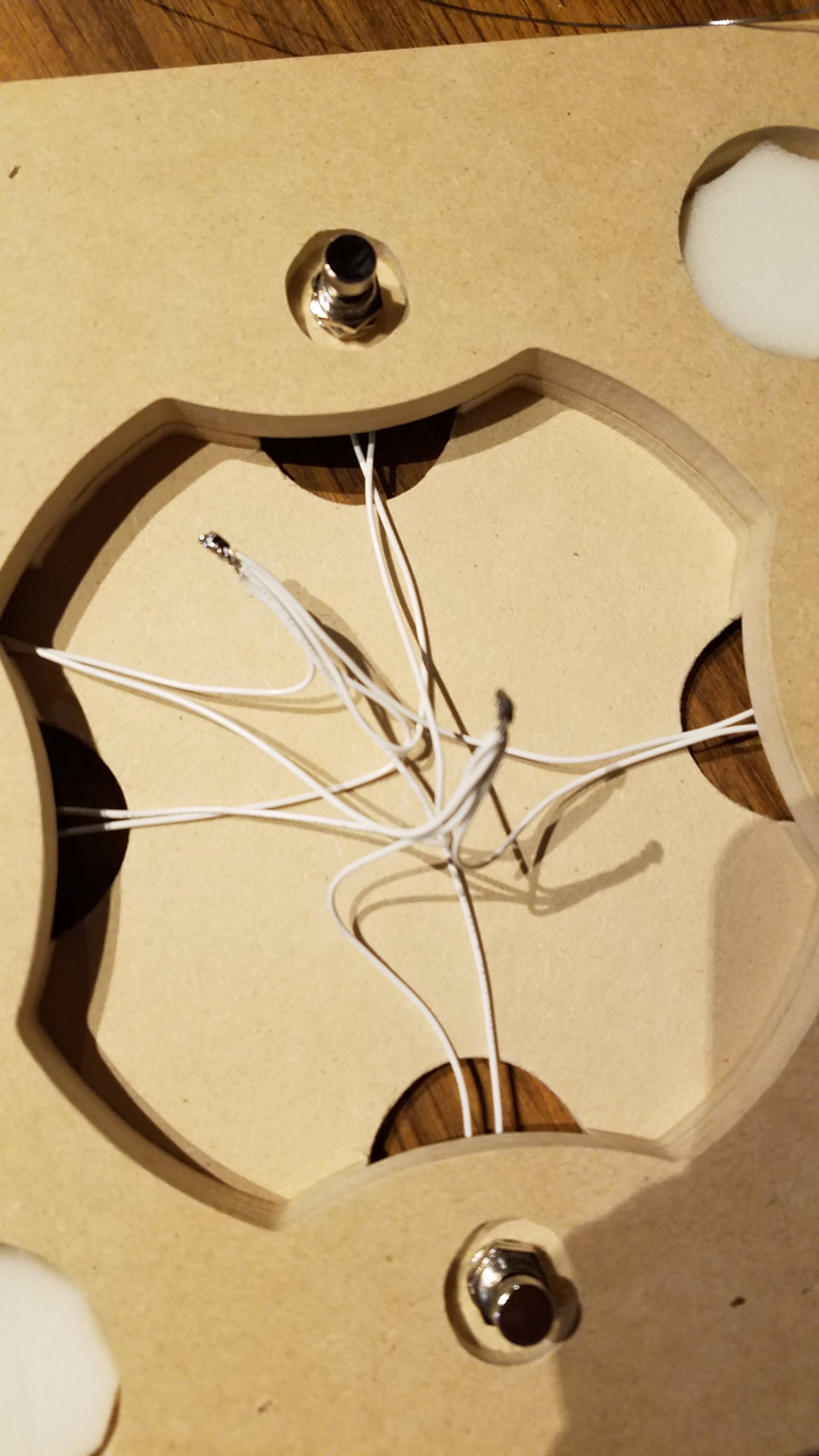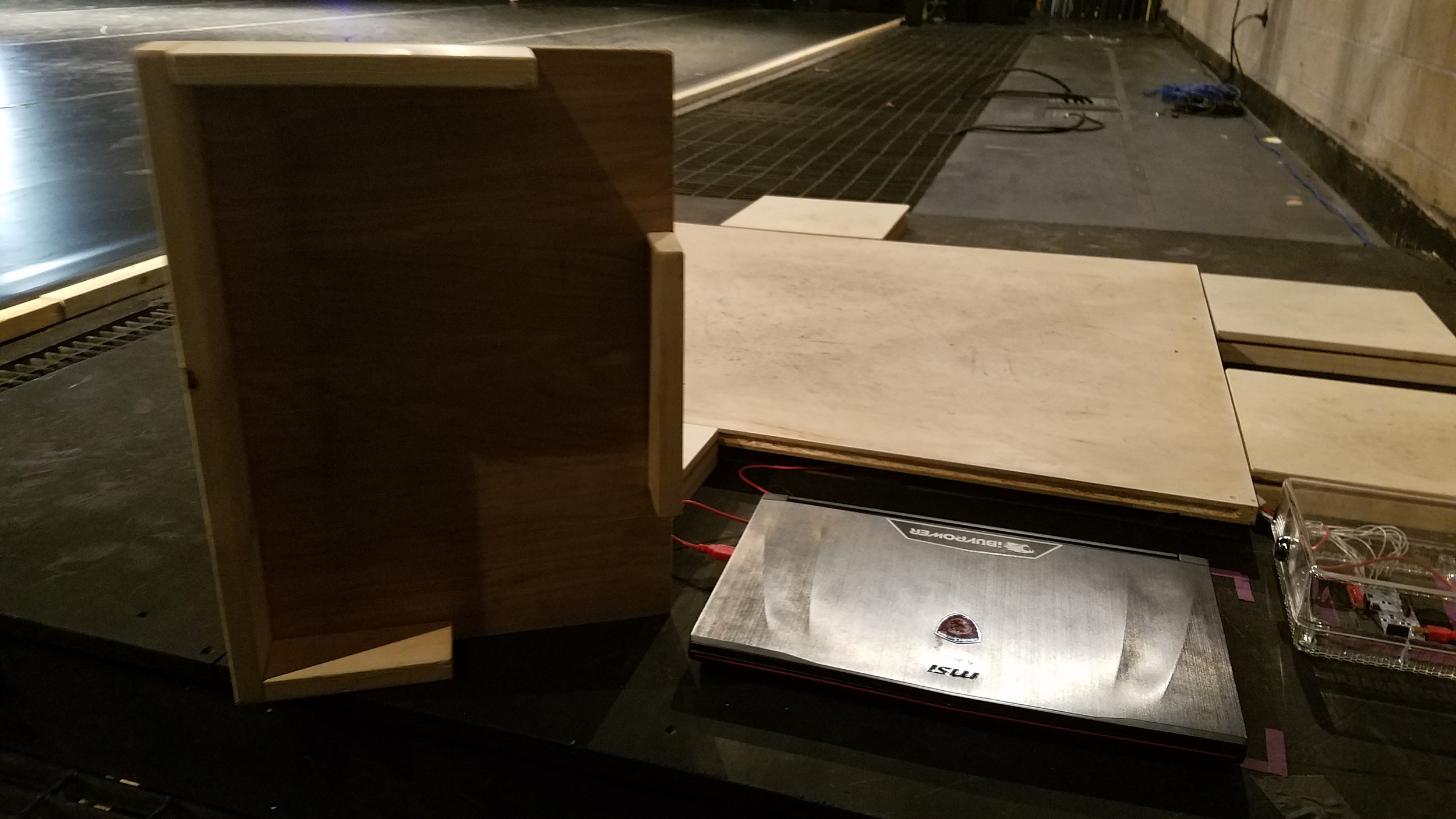Alex J. Gendal
Projection Designer | Theatrical System Consultant
The “Tap-Dance Revolution” Dance Board
The concept came from the choreographers, Millie Heckler and Jeremy Arnold, who created the dance based on the phrase build upon the shoulders of giants. They wanted to choreograph a dance that referenced multiple styles of dance, including hip hop and tap. The idea of the dance board was to build a board with several buttons surrounding it, in order to live mix audio and visual components with the dancers feet.
My role consisted of designing and wiring a custom dance board, as well as building a network to allow these buttons to create custom audio clips and visuals. The buttons also had to be flexible in rehearsals to quickly trial and error sounds, as well as rapidly change sounds during a live performance.
Designing The Dance Board
The dance board needed to be built in pieces so it could be transported to and from the rehearsal dance studio, but also contained so minimal tech would be needed on the stage. I worked alongside our scene shop head who designed the individual buttons based on my concept. When the button was pressed, it would complete a circuit, send a signal to a Makey Makey circuit board, and that would talk to the Touchdesigner software.
Building And Testing
After receiving a base model for the buttons, I did a rough wiring test with some alligator clips and metal screws to test how well the connectivity was. The rest of the pictures detail how I attached all the pieces using hardware and soldering.
In the final design, we used guitar pedal triggers in 4 places to ensure that no matter where the dancer touched, a signal would always be sent.
The buttons were built with internal wiring channels so wires wouldn’t get squished under the button.
All wires were soldered to the buttons, and then grouped together in parallel, with two main wires being sent to the Makey Makey board for each button.
Rehearsing
Because of the kind of dance they had in mind, I had to quickly mockup some sounds and a few buttons for them to use in the rehearsal room. Once I was able to build a sound effect network in Touch Designer 99, I quickly wired together a few buttons and handed it off to the dancers. Throughout the next week the buttons improved in rehearsals as the design was finalized and fabricated in the scene shop. After the final button was wired and programmed, the dancers had about 4-5 days with the full board before the performance, and about 2 total weeks of working time with the board from its first phase to its final.
Final Build and Wiring
Here is the final documentation and the physical look and layout of all the hardware compiled onto a single platform.
A Wiring Diagram of the dance platform and the associated buttons, makey makey, and computer.
A System Diagram of the dance platform in relation to the rest of the computer and projection system.
This is the final layout of the on-stage computer and custom protective cover, the Makey Makey in its own custom plastic shell, and Platform Buttons. Eventually the computer cover was painted black, but the buttons remained their natural wood grain.

